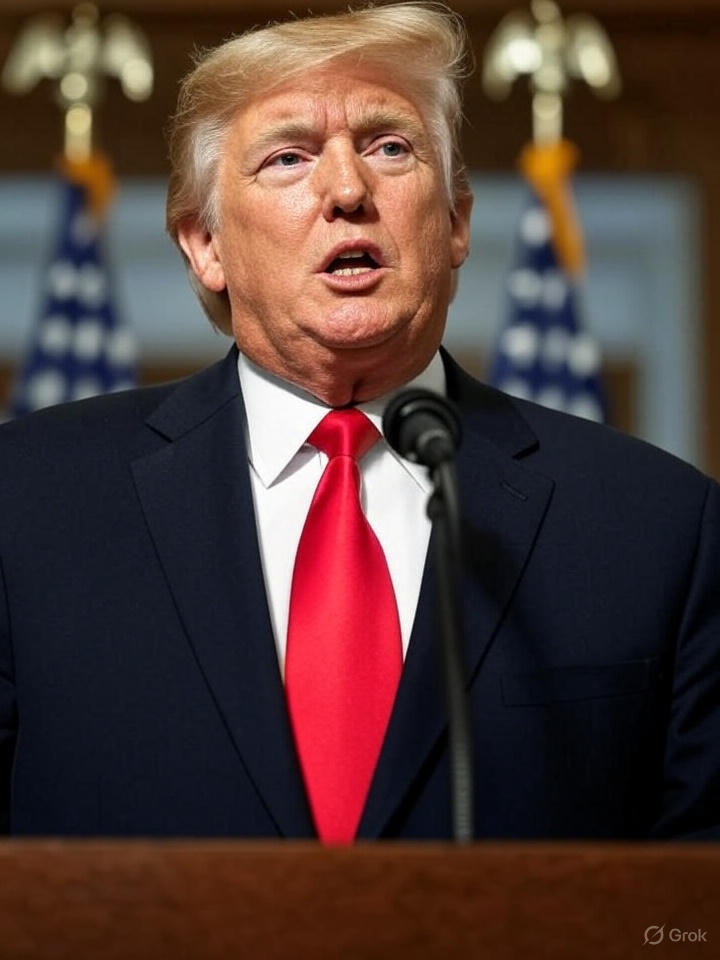On July 31, 2025, U.S. President Donald Trump escalated his ongoing trade war with Canada, linking trade negotiations directly to Canada’s decision to formally recognize a Palestinian state a move announced by Canadian Prime Minister Mark Carney in the lead up to the U.N. General Assembly scheduled for September (The Guardian).
Trump issued a blunt message on his Truth Social platform:
“Wow! Canada has just announced that it is backing statehood for Palestine. That will make it very hard for us to make a Trade Deal with them. Oh’ Canada!!!” (The Guardian)
He warned that unless Canada reached a trade agreement with the United States by an August 1 deadline, the U.S. would impose a 35% tariff on all Canadian goods not protected under the US Mexico Canada Agreement (USMCA) (The Guardian).
Background Context
1. Existing Trade War Framework
A broader trade conflict has been underway since February 2025, when Trump imposed sweeping tariffs on Canadian and Mexican goods (25% on most imports; 10% on Canadian energy products) under executive authority citing immigration and drug trafficking concerns (en.wikipedia.org). Canada responded with retaliatory tariffs on U.S. exports totaling tens of billions of dollars(Globedge).
2. Canada’s Shift on Palestine
On July 30, Prime Minister Carney announced Canada’s plan to recognize Palestinian statehood in September conditional on reforms such as inclusive democratic elections in 2026 and Hamas’s exclusion from government (The Australian). Canada joins France and the U.K. in this evolving diplomatic posture, citing the worsening humanitarian crisis in Gaza as a moral imperative (The Australian).
What Trump’s Move Signals
Mixing Trade and Foreign Policy
This escalation marks a clear attempt to use trade leverage to influence Canada’s foreign policy decisions a strategy Trump has applied in other contexts, including Brazil and India (AP News).
Political Messaging and Pressure
Trump has previously taunted Canada with hyperbolic rhetoric, referring to it as the potential “51st state” and criticizing former Prime Minister Trudeau as “Governor Trudeau.” His latest comments reinforce a pattern of personalizing and politicizing negotiations (Politico).
Implications & Risks
Economic Fallout
Canada is Washington’s largest export market after Mexico, purchasing more than 75% of its goods annually. A 35% tariff on non USMCA items would severely disrupt bilateral trade flows, supply chains, and export driven Canadian industries especially in steel, aluminum, and autos (Reuters).
Diplomatic Fallout
Canada’s gesture toward Palestinian recognition may strengthen its alignment with global humanitarian sentiment, but it risks jeopardizing trade ties with the U.S. potentially weakening diplomatic relations.
Negotiation Breakdown Risk
Carney has acknowledged that talks had been “constructive” but remained unresolved as of late July, and warned that agreement by the deadline was not guaranteed (Reuters).

Summary Table
| Element | Details |
|---|---|
| Key Decision | Canada to recognize Palestinian statehood in September (if PA reforms) |
| Trump’s Reaction | Threat to impose 35% tariffs on non‑USMCA Canadian goods if no deal by August 1 |
| Wider Strategy | Use of trade policy to pressure political alignment on foreign affairs |
| Economic Stakes | Canada buys more than three quarters of U.S. exports; key sectors at risk |
| Diplomatic Risks | Escalation may undermine traditional U.S. Canada partnership |
Final Thoughts
Trump’s linkage of Canada’s foreign policy choice on Palestine to trade negotiations represents a distinct intensification in his use of tariffs as geopolitical leverage. His threat of a 35% tariff deadline underscores not only economic coercion but a broader shift toward intertwining symbolic diplomacy with material consequences.
For Canada, the decision to recognize Palestine reflects alignment with international momentum and humanitarian pressure but comes at the cost of inviting confrontation with its largest trading partner. Whether diplomacy will defuse this moment or it spirals into greater economic confrontation remains uncertain as the August 1 deadline approaches.

